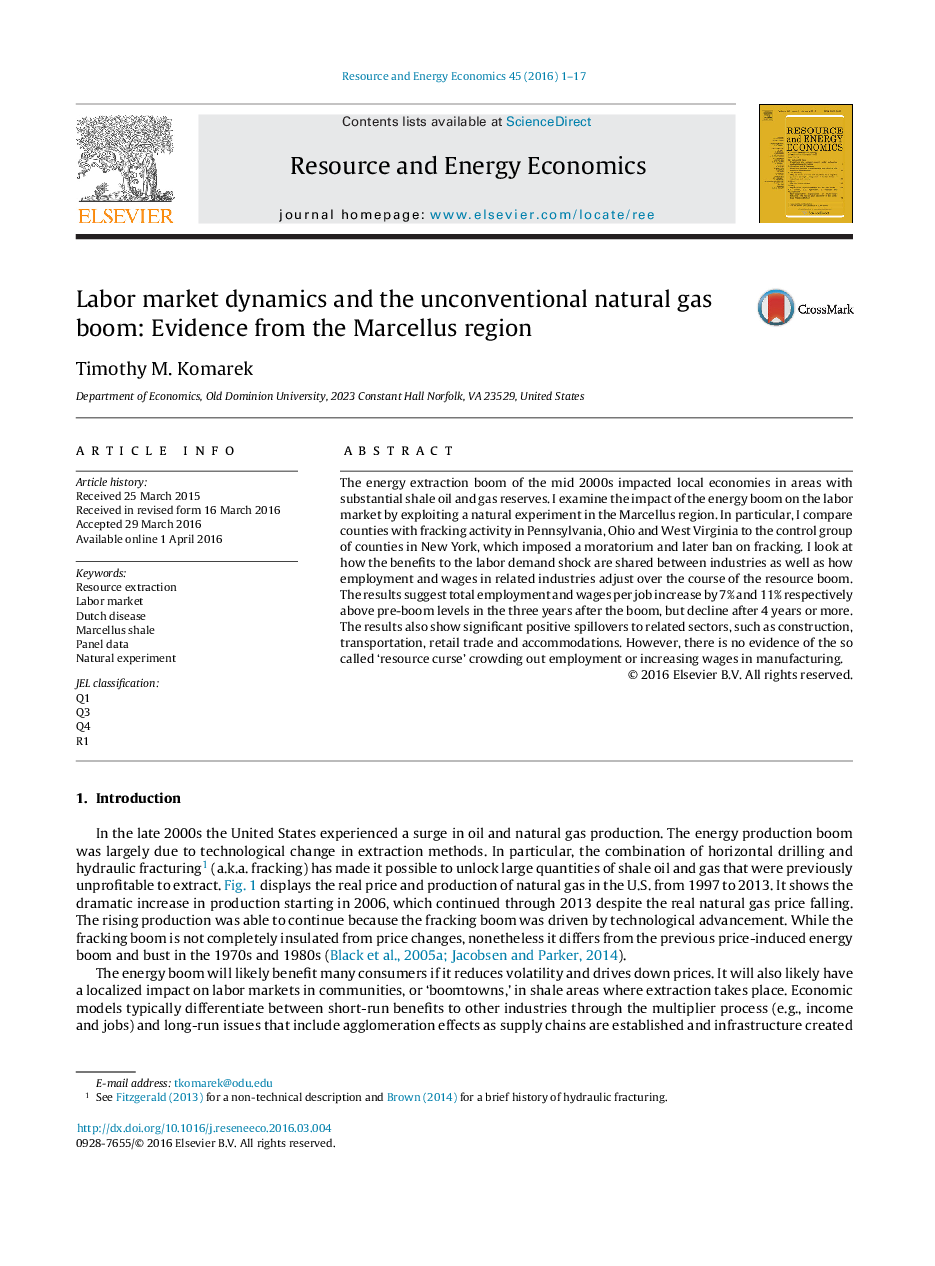| Article ID | Journal | Published Year | Pages | File Type |
|---|---|---|---|---|
| 985505 | Resource and Energy Economics | 2016 | 17 Pages |
•I examine the effect of fracking on local employment and wages by sector.•The differing policies in the Marcellus region provide a natural policy experiment.•Estimates show increases in employment and wages during the drilling phase.•Dynamic estimates show spillovers to related sectors, but appear to be short-lived.•Do not find evidence of crowding-out in the traded sector.
The energy extraction boom of the mid 2000s impacted local economies in areas with substantial shale oil and gas reserves. I examine the impact of the energy boom on the labor market by exploiting a natural experiment in the Marcellus region. In particular, I compare counties with fracking activity in Pennsylvania, Ohio and West Virginia to the control group of counties in New York, which imposed a moratorium and later ban on fracking. I look at how the benefits to the labor demand shock are shared between industries as well as how employment and wages in related industries adjust over the course of the resource boom. The results suggest total employment and wages per job increase by 7% and 11% respectively above pre-boom levels in the three years after the boom, but decline after 4 years or more. The results also show significant positive spillovers to related sectors, such as construction, transportation, retail trade and accommodations. However, there is no evidence of the so called ‘resource curse’ crowding out employment or increasing wages in manufacturing.
